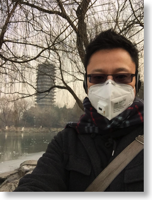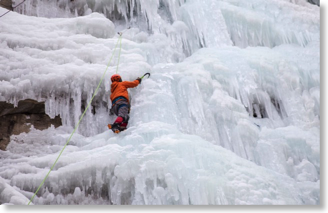CRCNS PI Meeting 2018

Field Notes from Beijing
Vertical integration of scientific research. Although disciplinary boundaries are still much more pronounced in China than the US, there is something really exciting about the vertical integration in the various disciplines. I saw a talk where a single group went through genetic screening in thousands of patients, followed up with a set of studies involving interrogation of gene candidates using animal models and in vitro approaches.
This has a definite beauty and logic to it, since many of our most pressing research questions are problem-based as opposed to disciplinary based. One can get out much of the value of interdisciplinary research by simply stacking the different disciplines together. Conversly, I can’t imagine what grant reviewer would say if I proposed to do something like this in the US.

Undoubtedly the air pollution. After a couple of days with a gloriously blue sky, courtesy of a Siberian weather system, I got the full Beijing treatment of code red air quality. That meant wearing masks even when inside. Hopefully this is the darkest hour before it gets better. I even overheard migrant workers talking about going back to their villages because of the pollution. Surely the developmental curve has caught up to the point that economic development – life quality tradeoff is moving towards the latter.

Crampons! Ice axes! Jokes about drinking your own urine! It’s ice climbing at the foot of the Great Wall!
There is something hugely satisfying and soothing about the dull thud of the ice axe into the ice. It was much more accessible than I had thought, but of course I was with serious professionals. I think I just found my new hobby.
My Typical Day

Anyway, overall I found it a surprisingly difficult question, so I thought about a bit afterwards. Here’s my answer (for now). Perhaps it would help people who are thinking about entering into this area, or just help demystify what a neuroeconomist/neuromarketing researcher does.
So instead of by type of day, I thought it’s more helpful to organize some of the types of conversations I have in a single day. The actual mix varies, but I think that’s a pretty good encapsulation.
Business school faculty: This group includes consumer researchers, psychologists, economists, etc. When I first came to marketing, I would spend a lot of time finding common starting point with them, in terms of our mutual interests. It could be something like branding or pricing, but mostly it took on an almost philosophical quality about what kind of science one can do.
A lot of the time was spent on debunking and setting right expectations, like, “It would be nice if there was an irrational part of the brain, but it’s a bit more complicated than that.” Nowadays we understand each other better, so the conversation is a lot of practical. They understand what we can and can’t do, and I understand what are some worthwhile questions. In fact, these conversations led me to start this blog.
- Practitioners/Managers: I’m having these conversations more often in the past couple of years. It reminds me a lot of those early conversations with bschool faculty, which makes sense since we’re just getting to know each other.
- My lab and collaborators: This includes basically people directly involved in my researchers. It’s a pretty electic bunch of biological scientists, social scientists, biomedical researchers, and methods people. This is when I can totally geek out, a lot about designing experiments, data analysis, using and developing new methods. And grant writing, lots of grant writing. That’s the one part I envy my Haas colleagues. Most of them don’t have to write grants.
- Students (both MBA and undergrads): One of the biggest challenges for those of us moving from basic to applied science is the teaching. For me, the turning point was when I stopped teaching students the knowledge that I think they should learn, but rather the knowledge that they will want to have one, five, ten years into their careers. This has made teaching marketing, data, and applying the scientific method to business both fun and useful. Simple customer-orientation when you get down to it, but like a lot of simple things in life, those are the hardest lessons to learn.